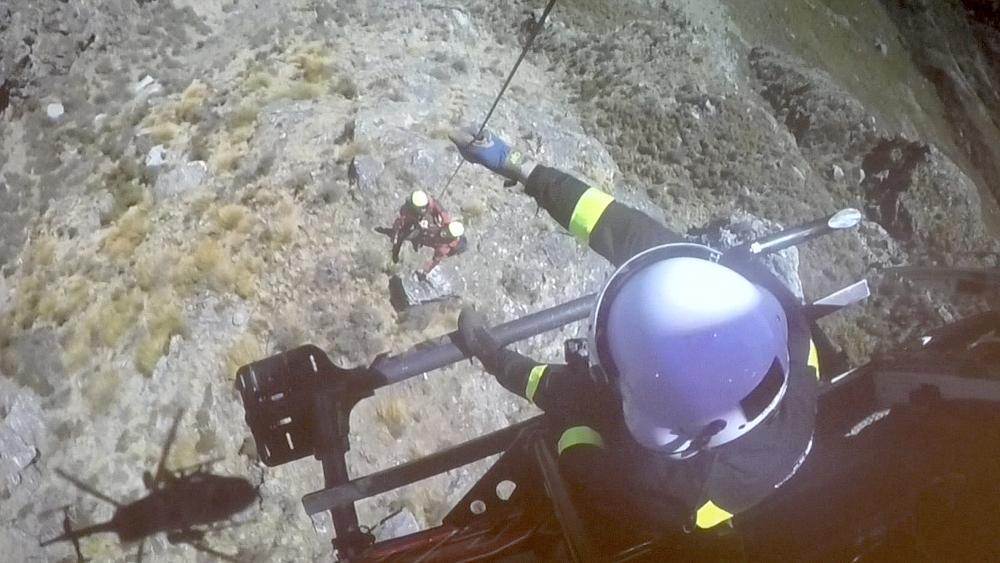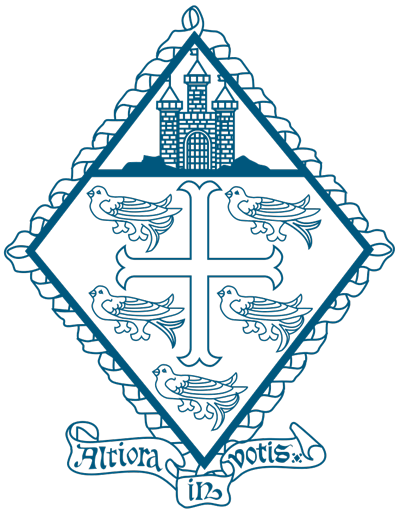In a most interesting talk, Paramedic Ross Kirkpatrick outlined the pathway to becoming a Paramedic, describing some aspects of the work they do and illustrating his presentation with some great photos.
What is Paramedicine?
The profession of Paramedicine is relatively young, with only two Universities in New Zealand offering degrees in the subject, Whitireia Polytechnic in Wellington, and AUT. While there are courses in Australia and the UK, the US paramedics are not a degree based program. Essentially, Paramedicine enters the picture when something goes wrong some distance away from a hospital such that people need to be transported to hospital as soon as possible.“Hopefully in a better state than you found them, and not screaming in pain - which is probably the biggest part of my job. . . . . We are not doctors, we are not nurses . . we get to do the cool things of both of those.” Paramedicine continues to develop, and there are now paramedics based in Medical Centres and Hospitals. They work autonomously, without necessarily having a doctor overseeing us.” [For a definition of Paramedicine, see https://pubmed.ncbi.nlm.nih.gov/35002246/].

Becoming a Paramedic.
The foundation year for a Paramedicine degree is the same as for most Health Sciences, so it would be entirely possible to change ones career path at the end of first year to enter the world of Paramedicine. Paramedicine degree courses includes some clinical experience working in the field with qualified paramedics. After obtaining the degree, further ‘on the job’ experience is gained by working as an Emergency Medical Technician (EMT), involving administration of certain drugs orally, by inhalation and by intramuscular injection. The post-graduate ‘apprenticeship’ is expected to last around 2-4 years before one becomes a fully qualified Paramedic, by which time one should have a more in-depth knowledge of pathophysiology and pharmacology. Qualified Paramedics can insert intravenous lines, and are “the mainstay of resuscitation”. After perhaps two further years of experience, one can undertake a Post-graduate Diploma which means further procedures can be undertaken, such as relief of a collapsed lung by inserting a needle into the chest. [“Is anyone squeamish?” asked Ross,”Let me know if things start going fuzzy, and I’ll fix you up!”]. Or in a very bad case, make an incision in the chest wall. “We do all the drugs - ketamine is a great drug, it gets us through most broken limbs and things. We can provide pre-hospital anaesthesia. If someone has a heart attack and cannot be transported to the hospital within 90 minutes, Paramedics can inject a thrombolytic drug which dissolves the clots, “Pretty cool, but also pretty scary, because as well as dissolving the clots you do want, it may dissolve others, leading to unwanted bleeding - intracranial haemorrhage being of prime concern. “So we get the high end stuff - and we get the responsibility of the high end stuff.”
Paramedicine in the Sky
With some further experience one can “start looking at doing that same job in that thing that flies at 200 km per hour. You can’t hear in it, there are spinning things that, if you walk into them, will kill you, and at all hours of the day and night. It’s great!” The main advantages of using helicopters are speed and manoeuvrability. Downsides include the fact that they are very noisy, you need ear protection, they vibrate a lot. “The engineers describe them as ‘fatigue racks rotating around an oil leak’”. Every 50 hours of flight time they undergo a check that takes 4 to 5 hours. Although some steps have alleviated the problem (more later), weather can still make things difficult.

- The blood and fluid warmer reduces the harmful effects of giving intravenous fluids to maintain blood volume. The cost of each is high, even the blood warmer’s small black component is $300 and is only usable once, while the other ‘black box’ in the blood warmer costs $5,000, though it can be used multiple times. The ventilators cost around $55,000 “And we just ordered two of them!”, with the monitor costing around $35,000.
Manually administered CPR is physically very demanding, two people taking it in turns to carry out the procedure every two minutes, made even worse by the limited space in a helicopter, and a recent welcome development is an automatic CPR device:

When it is necessary to give emergency anaesthesia, one of the three drugs used is a muscle paralytic intended to relax the jaw muscles to enable the use of a laryngoscopy blade to manipulate the tongue and jaw to pass a plastic tube into the trachea. The problem of the muscle paralytic is that it causes all skeletal muscles to stop working, including respiratory muscles. Consequently one needs to act quickly in carrying out the procedure.
The Flight Aspect
Ross’s current boss, Graham Gale and family, are involved in several helicopter related activities, from tourism to agricultural spraying, and in the early days of the rescue service might be called from a spraying job to an emergency, so he would land, take off the spray tanks, them go and do the job. He was using a small helicopter, a Jet Ranger. Noting that the Auckland Helicopter service had larger machines, he said, “Why have they got big helicopters - I want a big helicopter!” And so one was purchased, sponsored by what was then Trans Rail, now KiwiRail.
“Probably one of the most instrumental changes in this area was getting a Helipad on Dunedin Hospital roof.” This significantly shortened the time from landing to receiving hospital care.

Currently there are seven EMS helicopters, with the latest one costing around $17,000,000, while another bought recently was a military machine purchased second-hand from Kazakhstan. “Quite difficult to get an ex-military helicopter out of Kazakhstan, apparently!”
The work of the team, while generally in the South Island, can be geographically more wide-ranging, from the sub-Antarctic Islands and even into the North Island. When cyclone Gabrielle was causing havoc over there, they supplied two crews and machines for a period of days. They have done the longest patient transport trip in the country, from Dunedin to Auckland. In the Sub Antarctic islands, sea-lions will sometimes approach the helicopters, requiring long poles to keep them away.
Advances in technology have made flights like this possible. The most recently purchased machine is automatically controlled in flight, only needing pilot assistance at take-off and landing. “The pilots really enjoy them, because they are smoother, faster, safer and the autopilot allows them to fly hands-off”.
With about half of the flying done at night, life was made easier with night vision goggles, the first pair being obtained by Graham was from Russia, with subsequent ones from the USA.
Flying into cloud in small aircraft such as the helicopters is a pretty frightening experience. Large planes have technology that guides them through when visibility is negligible, and Graham thought this could be made available for the helicopters. The disbelief that met this suggestion merely served to make him more determined - and so it came to pass! At present there are many such ‘skyway’ routes that enable this in the South Island. “What that means, you just look at the weather where you are, and where you want to be, and if there is a dodgy patch on the middle, you can just fly through that.” There still remains the problem, if they need to fly above freezing level, of ice forming on the rotors, and the helicopter “falls out of the sky.” Central Otago can therefore be difficult in winter. - Ross lived in Alexandra for a couple of years as a child, “It was the only place where we couldn’t go to Primary School in summer, because it was too hot, and we couldn’t go in the winter, because it was too cold!”

Ross pointed out that they were Paramedics, not Alpine rescue workers, etc., so when such services were required, specialists in the appropriate area were recruited. Much of the time is, in fact, spent “sitting and waiting”. (You can see a list of their recent calls at https://www.otagorescue.co.nz/about/mission-logs).
Question Time
As always, members had several questions, through which we learnt:
- For a standard job, the helicopter would be in the air within 3 minutes of receiving a call. Because of the risk of salt water damage to the helicopter needing a special floor to be put in place for water rescue taskings, it takes around an extra 5 minutes to be airborne in such cases.
- Although originally a part of St. John’s, the helicopters were provided by other sources, and following an accident in which a rescue helicopter crash landed into the sea (everyone was able to reach a nearby island, where they spent the night). St. John’s were liable for the health and safety of their people while in other providers aircraft so the services were separated - which in the end allowed HeliOtago to expand their clinical governance, procedures and medications.
- A shift is for 96 hours, involving being at base for the 4 days, and ‘on call’ for 4 nights.
- There are staffing issues across the health sector, and there has just been a recruitment drive in the UK, Australia and North America for paramedics on the road. HeliOtago has attracted paramedics from the world over, most recently employing people from Australia.
After showing two videos illustrating their work, which included some outstanding aerial views, Ross told us a little about his background. A ‘late developer’ academically, he left High School with a great interest in outdoor activities, then an accident he had himself led to volunteer work with St. John’s, and from there to a BSc in Paramedicine, Post-Grad. Diploma, and a Graduate Cert in Emergency Management.




